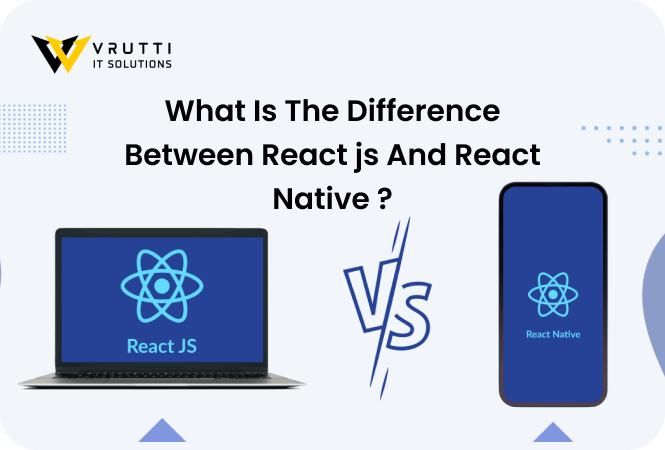What Is The Difference Between Reactjs And React Native

What Is The Difference Between Reactjs And React Native
What is React js?
React.js, commonly referred to as React, is an open-source JavaScript library developed by Facebook for building user interfaces (UIs) for web applications. It is widely used for creating interactive and dynamic front-end interfaces, including single-page applications (SPAs) and progressive web apps (PWAs).
What is React Native?
React Native is an open-source framework developed by Facebook that allows you to build mobile applications using JavaScript and React. It enables developers to create cross-platform apps for iOS and Android using a single codebase. With React Native, you can leverage your existing JavaScript skills to develop native-like mobile applications. It uses native components instead of web components, which gives it the ability to deliver a truly native user experience. This means that React Native apps have the performance and look-and-feel of native apps built using Swift (for iOS) or Java/Kotlin (for Android).
What is the difference between React and React native?
React and React Native are both developed by Facebook and share similar concepts, but they are used for different purposes and target different platforms. Here are the main differences between React and React Native:
- Target Platform:
- React: React is primarily used for building web applications. It generates HTML markup and runs in the browser.
- React Native: It is used for building mobile applications for iOS and Android platforms. It generates native UI components using JavaScript and runs on mobile devices.
- UI Rendering:
- React: React renders UI components using the browser's DOM (Document Object Model). It generates HTML elements that are rendered in the browser.
- React Native: It renders UI components using native UI components provided by the platform (iOS or Android). It translates React components into native UI elements, such as UIView on iOS and ViewGroup on Android.
- Development Environment:
- React: React development typically involves using tools like webpack or Create React App to bundle JavaScript code and run it in the browser.
- React Native: It development requires setting up a development environment specific to mobile platforms. Developers use tools like Xcode for iOS development and Android Studio for Android development, along with the React Native CLI.
- Components and APIs:
- React: React provides web-specific components and APIs, such as div, span, and input, along with web-specific events like onClick and onChange.
- React Native: It provides mobile-specific components and APIs, such as View, Text, and TextInput, along with mobile-specific gestures and interactions like onPress and onChangeText.
- Styling:
- React: React uses CSS for styling web applications. Styles can be defined using inline styles, CSS modules, or CSS-in-JS libraries.
- React Native: It uses a different styling approach, where styles are defined using JavaScript objects that resemble CSS properties. Styles are applied directly to React Native components using the style prop.
- Third-Party Libraries:
- React: React has a rich ecosystem of third-party libraries and tools for building web applications, including state management libraries like Redux and routing libraries like React Router.
- React Native: It also has a growing ecosystem of third-party libraries and tools, but they are specifically tailored for mobile development, such as navigation libraries like React Navigation and state management libraries like Redux Toolkit.
Conclusion
In summary, React is used for building web applications that run in the browser, while Hire Our React Native Developer for building mobile applications that run on iOS and Android devices. Despite their differences, both React and React Native .
the same underlying principles and concepts, making it easier for developers to transition between the two.

